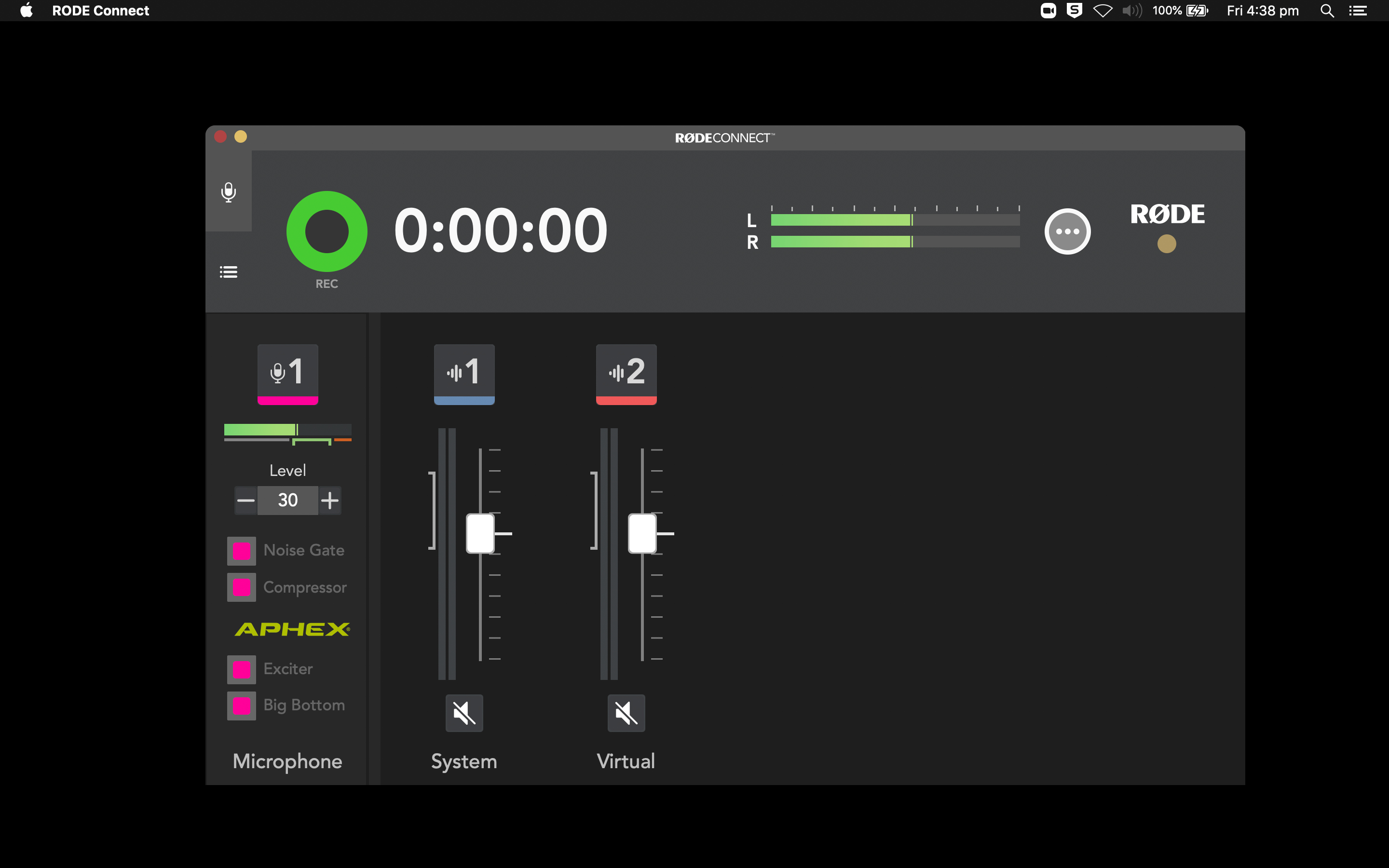RØDE Connect Audio Processing Explained
Using RØDE Connect is the easiest way to record a professional-quality podcast. With just a computer and one microphone, you can create incredible sounding recordings, even if you have little to no experience with audio production.
The secret? The abilty to unlock digital signal processing (DSP) within its compatible microphones that give you access to four high-quality audio processors: a compressor, noise gate, and legendary APHEX Aural Exciter and Big Bottom effects, which are found in the world’s best recording and broadcast studios (as well as the RØDECaster Pro). These processors are essential audio production tools that you will find professional podcasters and audio engineers using every day. They can only be enabled via RØDE Connect and have each been precisely tailored for voice recording to instantly give your podcast that rich, warm broadcast tone.
Below we’ll take a look at what each of these processors is and how they work, so you can have a better understanding of when best to use them.

How To Access RØDE Connect's Audio Processors
When you plug a compatible microphone into a computer, open RØDE Connect, and allocate it to a channel in the Setup Assistant, all four processors will automatically be activated.
To switch any of the processors off, navigate to the RØDE Connect mixer and click on the icon above the channel of the microphone, then simply click the box next to each one to toggle it on and off (note: if you switch any of the processors off before closing RØDE Connect, they will remain deactivated until you switch them on again).

The RØDE Connect recording interface with the settings for Channel 1 open. This is where you activate the NT-USB Mini's audio processing.
Noise Gate
A ‘noise gate’ is a common tool used in audio production to help reduce background noise in a recording. This “noise” can be caused by any number of things, including traffic or wind outside, air conditioners, fans in a computer, or people talking in another room. Microphones, particularly condenser microphones like the NT-USB Mini, are very sensitive and will pick up this sound no matter how faint, culminating in varying degrees of what is generally called “background noise” or a “noise floor”. Using a noise gate is an effective way to curtail this.
Simply put, a noise gate is a dynamic processor that removes quieter sounds from a recording. When a signal from a microphone (or any other audio device) is sent through a noise gate, it analyses the volume of the signal and either brings down (‘attenuates’) or completely removes anything that is below a set volume, called a “threshold”.
The easiest way to understand this kind of processor is by literally thinking of gate. Say the threshold is set at -40dB. Anything louder than this – i.e., your voice – will be allowed through the “gate”, but for any part of the signal that is below this threshold, such as background noise, it will shut – reducing the volume of these quieter sounds so that they are mostly inaudible. Overall, this will give you a cleaner, more professional-sounding recording.
Compressor
Compressors are one of the most common processors in audio production. They are used for a wide variety of applications, but when it comes to recording speech, they are generally used to make a voice sound clearer and more intelligible.
This is achieved by balancing out the dynamic range of an audio signal, bringing up quieter parts while reducing the volume of louder parts. When set correctly, it is a subtle effect that will make speech smoother and more natural sounding.
APHEX Aural Exciter and Big Bottom
Using the APHEX Aural Exciter and Big Bottom is an easy way to add more dimension to your voice.
The Aural Exciter is a powerful tool for bringing out detail and clarity in voice recordings. This is achieved by adding very subtle harmonic distortion to the higher frequencies of a signal, giving it more sparkle and presence.
The Big Bottom is also very powerful. It will give your voice depth and punch without creating muddiness. This is achieved by adding subtle harmonics to the low-end frequencies of a signal, creating tighter bass articulation and giving you that rich tone heard on so many radio broadcasts and podcasts.
It also compliments the Aural Exciter beautifully. When these two processors are combined, they will give your voice an unmistakable professional sheen.
To download RØDE Connect for free now and experience these four processors first-hand, click here, and to find out more about what RØDE Connect has to offer and how it can help you create polished, professional podcasts, check out the RØDE Connect Learning Hub.